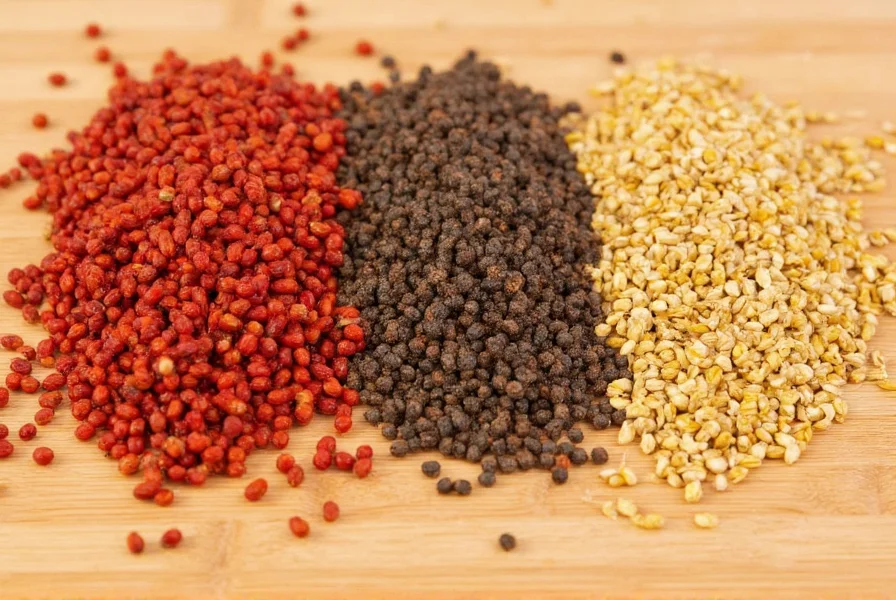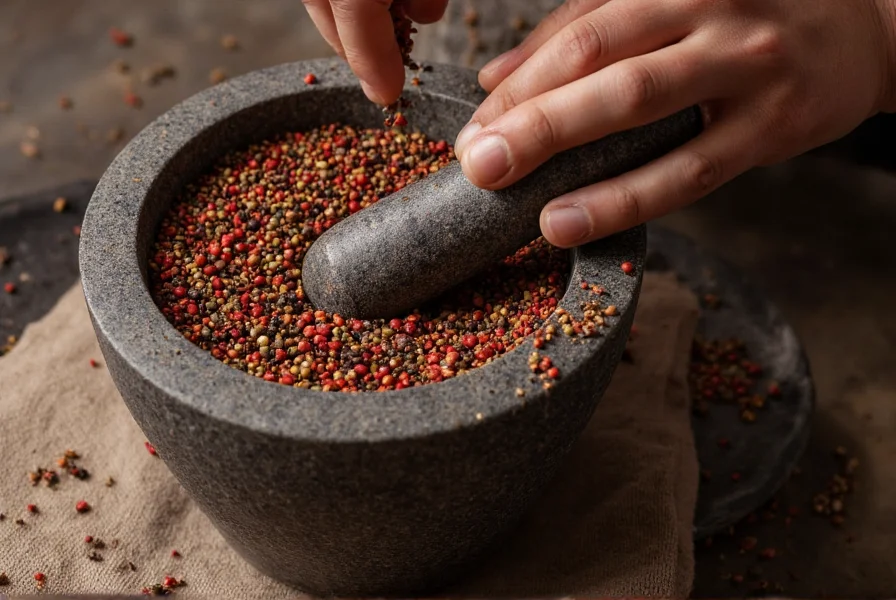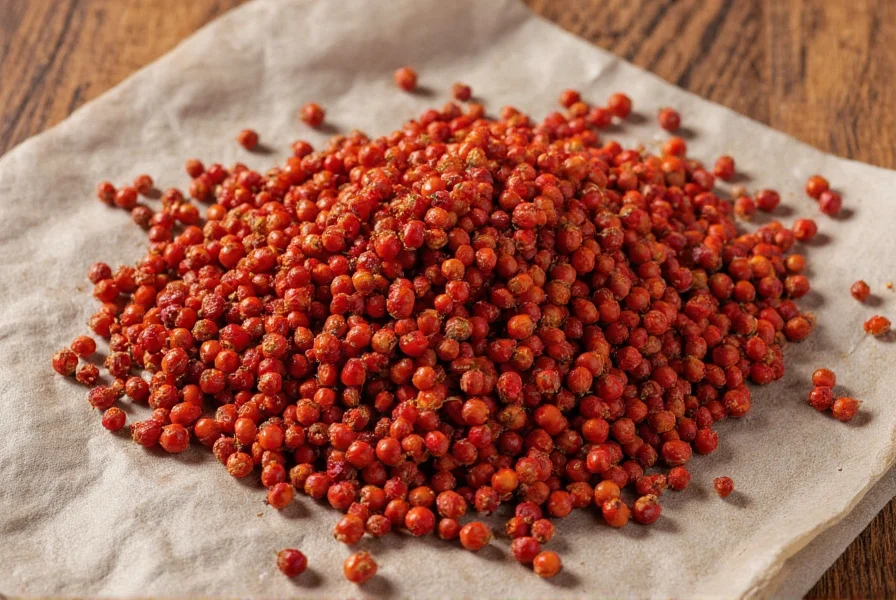Understanding Szechuan pepper's unique characteristics is essential when seeking alternatives. Unlike regular black or chili peppers, Szechuan peppercorns (Zanthoxylum species) create a distinctive tingling, numbing sensation called má in Chinese cuisine. This isn't heat but a vibration caused by hydroxy-alpha-sanshool compounds that stimulate nerve endings. Authentic Szechuan pepper also delivers citrusy, floral notes that balance spicy elements in dishes like mapo tofu and kung pao chicken.
Why Finding a True Szechuan Pepper Substitute Is Challenging
The primary challenge in replacing Szechuan pepper lies in replicating its dual sensory experience: the numbing sensation combined with complex citrus undertones. Most substitutes only address one aspect. Commercial "Szechuan pepper" sold in Western markets is often adulterated or mislabeled, frequently containing inferior Zanthoxylum americanum instead of authentic Z. simulans or Z. bungeanum. This explains why many home cooks struggle to achieve restaurant-quality results.

Top 5 Szechuan Pepper Alternatives Ranked by Effectiveness
| Alternative | Best For | Numbing Effect | Flavor Accuracy | Availability |
|---|---|---|---|---|
| Tasmanian Pepperberry | Western kitchens | ★★★☆☆ | ★★★☆☆ | ★★★★☆ |
| Sansho Pepper | Japanese dishes | ★★★☆☆ | ★★★☆☆ | ★★★☆☆ |
| Black Pepper + Coriander Blend | Emergency substitute | ★☆☆☆☆ | ★★☆☆☆ | ★★★★★ |
| Timut Pepper | Gourmet cooking | ★★★★☆ | ★★★★☆ | ★★☆☆☆ |
| Ground Szechuan Peppercorn Mix | Authentic recipes | ★★★★★ | ★★★★★ | ★★★☆☆ |
Detailed Analysis of Each Alternative
1. Tasmanian Pepperberry (Best Overall Substitute)
Grown in Australia from the Tasmannia lanceolata plant, this substitute delivers moderate numbing sensation with berry-like undertones. Use 3:1 ratio (Tasmanian to recipe's Szechuan requirement). Unlike authentic Szechuan pepper, it lacks the pronounced citrus notes but provides the signature tingling effect. Professional chefs recommend toasting whole berries before grinding for maximum flavor release. This represents the most accessible szechuan peppercorn replacement for western kitchens with consistent quality.
2. Sansho Pepper (Japanese Alternative)
Derived from Zanthoxylum piperitum, sansho offers milder numbing with distinct lemony notes. Common in Japanese cuisine, it works well in dishes where you want subtle ma la effect without overwhelming heat. Use equal parts sansho to Szechuan pepper in recipes. Note that sansho loses potency quickly—always buy whole berries and grind fresh. This is the preferred szechuan pepper alternative for authentic japanese cooking when adapting Chinese recipes.
3. Black Pepper and Coriander Seed Blend (Pantry Staple Solution)
For immediate needs, combine 1 tsp freshly ground black pepper, 1/2 tsp coriander seeds, and 1/4 tsp cinnamon. The coriander provides citrus notes while black pepper delivers heat. Though it lacks the numbing sensation, this blend approximates Szechuan pepper's flavor profile in a pinch. Add 1/8 tsp asafoetida for enhanced umami in vegetarian dishes. This emergency mix works surprisingly well as a homemade szechuan pepper substitute when authentic ingredients aren't available.

Advanced Substitution Techniques
For professional results when replacing szechuan pepper in recipes, consider these chef-recommended techniques:
- Layering flavors: Combine 50% Timut pepper (for citrus notes) with 50% Tasmanian pepperberry (for numbing)
- Oil infusion: Steep 2 tsp crushed alternatives in 1/4 cup neutral oil for 20 minutes to extract maximum flavor compounds
- Temperature control: Add substitutes at different cooking stages—citrus elements early, numbing components late
Regional Variations and Availability Considerations
Availability of authentic Szechuan pepper varies globally due to USDA restrictions on Chinese-grown varieties. In Europe, look for EU-approved Z. bungeanum from Nepal or Bhutan. American cooks often find better quality in Korean or Japanese markets (sold as sancho). When substituting szechuan pepper for authentic chinese cooking, remember regional Chinese cuisines use different varieties—Sichuan province prefers hong hua jiao (red flower pepper) while northern regions use milder qing hua jiao (green flower pepper).
Common Mistakes to Avoid
Many home cooks make these critical errors when trying to replace szechuan pepper:
- Using chili powder as substitute (adds heat but no numbing)
- Over-toasting alternatives (destroys delicate citrus compounds)
- Using pre-ground versions (loses volatile oils within hours)
- Ignoring regional recipe requirements (Sichuan vs. Hunan dishes need different profiles)
For best results, always toast whole peppercorns in a dry pan over medium-low heat until fragrant (about 2 minutes), then grind immediately before use. Store unused portions in an airtight container away from light—properly stored alternatives maintain potency for 3-4 months.
FAQ
Can I use regular black pepper as a Szechuan pepper substitute?
Black pepper alone makes a poor substitute as it only provides heat without Szechuan pepper's signature numbing sensation. For better results, combine 1 tsp black pepper with 1/2 tsp coriander seeds and 1/4 tsp cinnamon. This blend approximates the citrus notes while providing some complexity, though it still lacks the characteristic tingling effect.
What's the difference between Szechuan pepper and sansho pepper?
Szechuan pepper (Z. simulans/bungeanum) originates from China and delivers intense numbing with pronounced citrus notes. Sansho pepper (Z. piperitum) is Japanese, offering milder numbing with distinct lemony flavor. Sansho works well in Japanese dishes but lacks the depth needed for authentic Sichuan cuisine. When substituting sansho for Szechuan pepper, use 25% more to compensate for its milder potency.
How can I make my Szechuan pepper substitute taste more authentic?
For more authentic results when replacing szechuan pepper in recipes, toast your substitute blend with 1 star anise and 2 cloves before grinding. The additional spices enhance the complex flavor profile. Professional chefs also recommend adding 1/8 tsp asafoetida to vegetarian dishes for umami depth. Always add the substitute during the final minute of cooking to preserve volatile flavor compounds.
Why doesn't my Szechuan pepper substitute create the numbing sensation?
Most substitutes lack hydroxy-alpha-sanshool, the compound responsible for Szechuan pepper's numbing effect. True alternatives like Timut pepper or Tasmanian pepperberry provide mild tingling, but nothing replicates authentic Szechuan pepper's intensity. If numbing sensation is crucial, seek out genuine Z. simulans from specialty Asian markets—many "Szechuan pepper" products sold in Western supermarkets are mislabeled or degraded.
Can I use Szechuan pepper substitutes in mapo tofu?
Yes, but with adjustments. For mapo tofu, use a 2:1 blend of Timut pepper to Tasmanian pepperberry to approximate the authentic numbing-spicy balance. Add the substitute during the final minute of cooking to preserve flavor compounds. Traditional mapo tofu requires the distinctive ma la sensation, so if using a non-numbing substitute like black pepper blend, increase chili oil by 25% to compensate for the missing sensory element.











 浙公网安备
33010002000092号
浙公网安备
33010002000092号 浙B2-20120091-4
浙B2-20120091-4